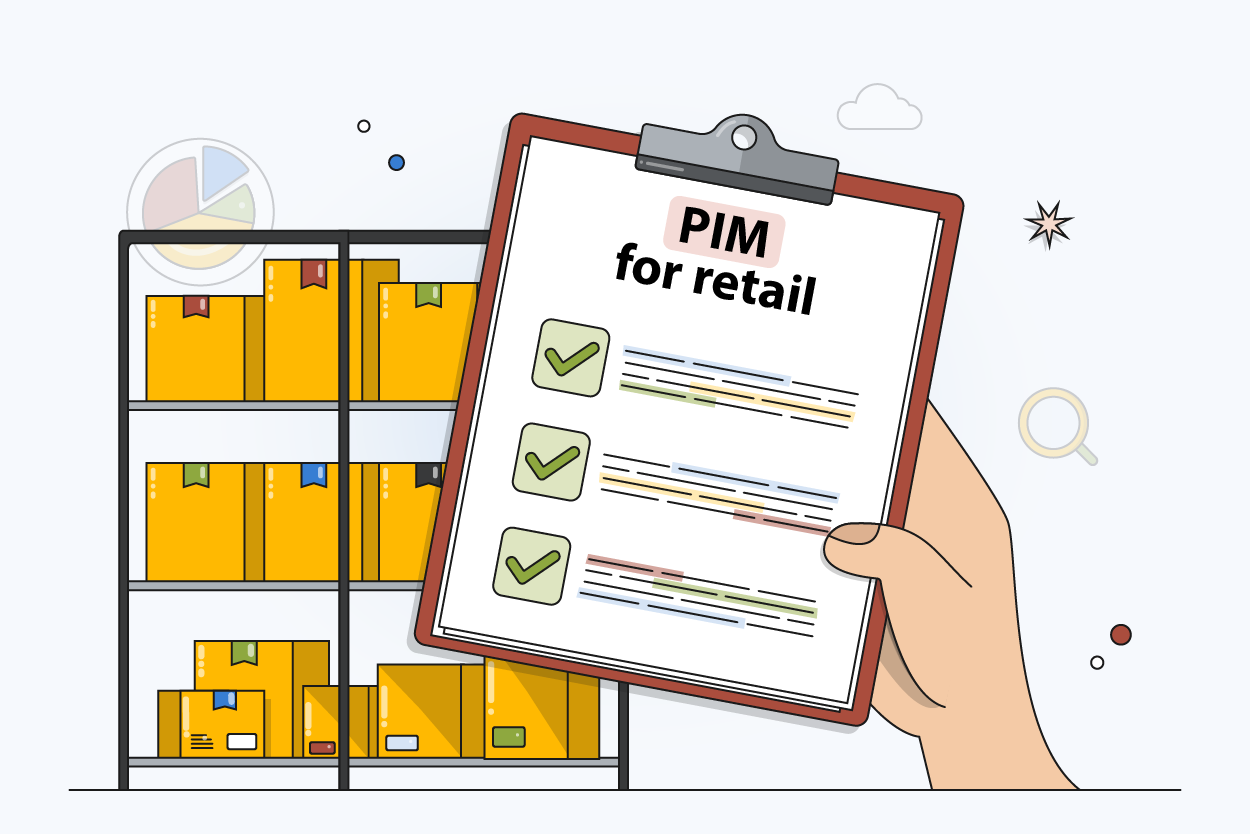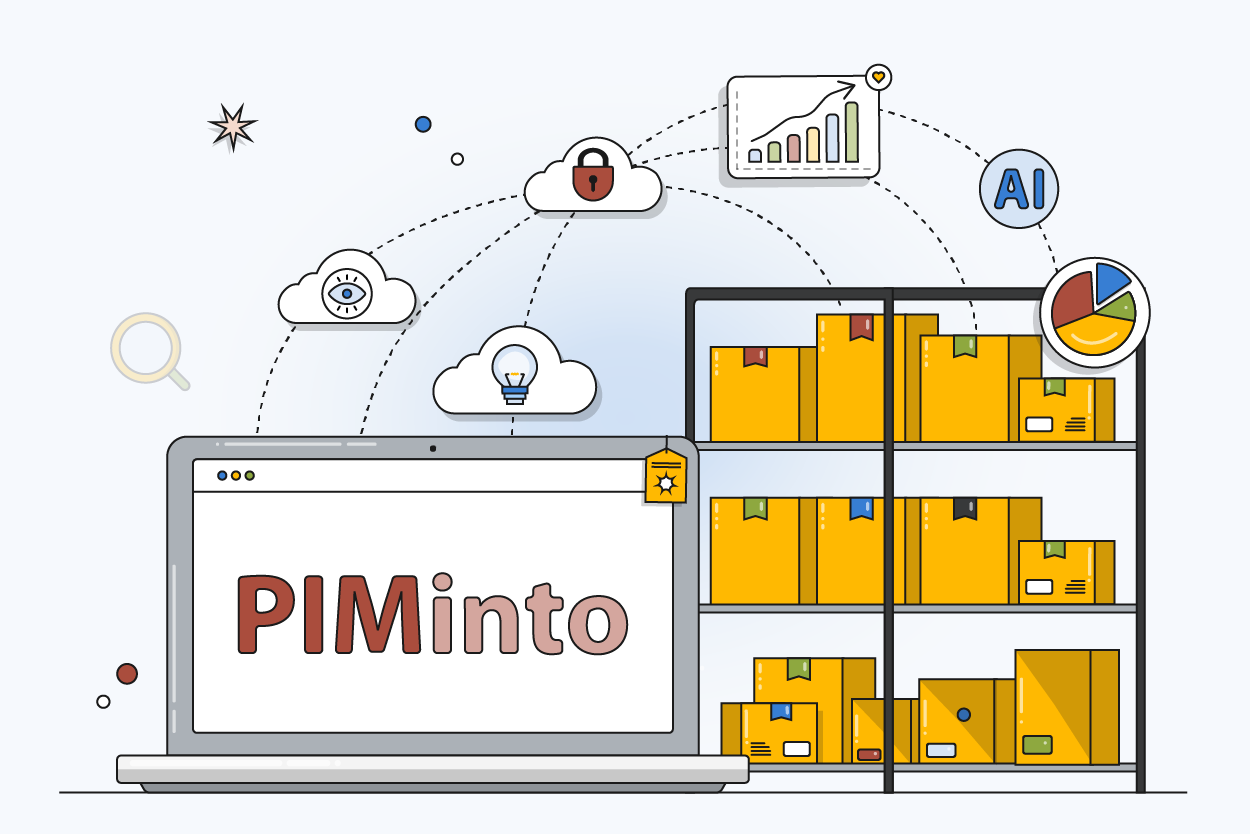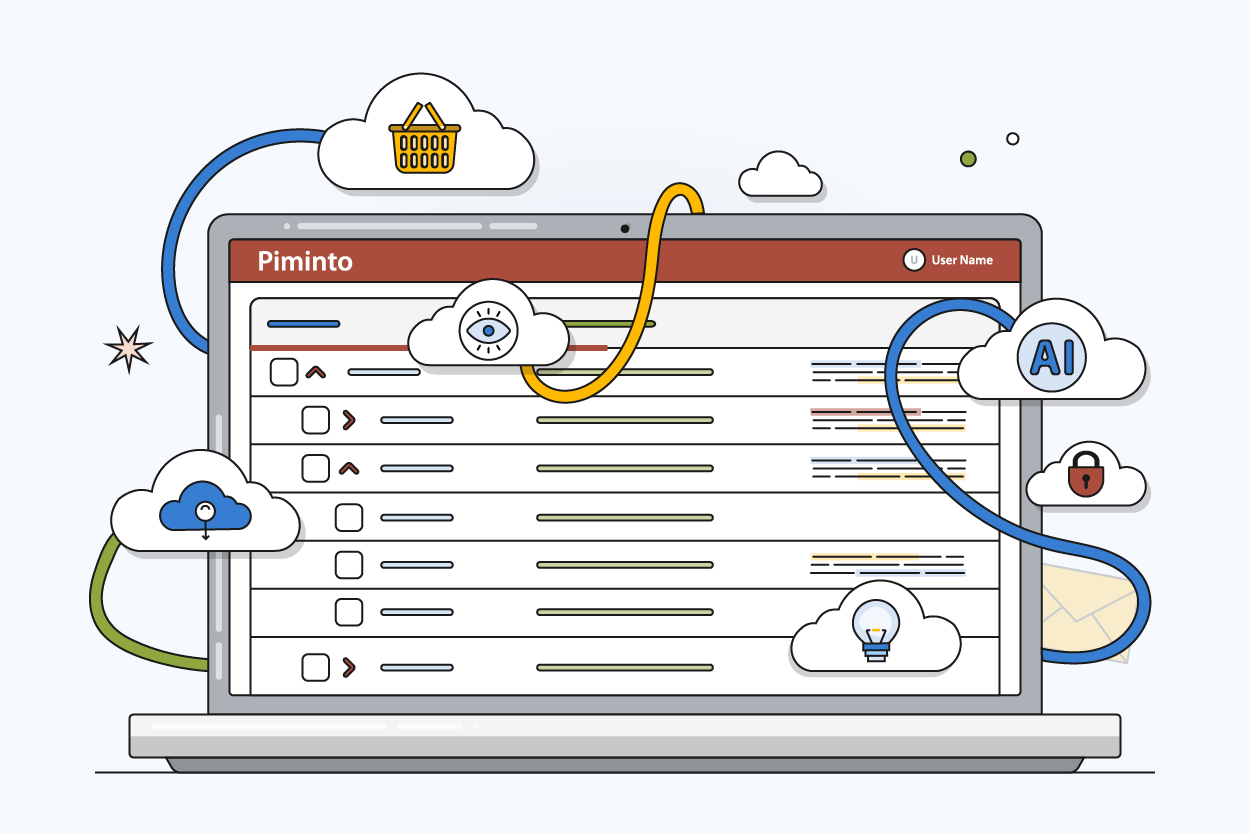Blog » The Complete Guide to PIM for Retail: Transform Your Product Management

Product data drives retail. Every product in your inventory has names, prices, specs, images, videos, and more. Multiply that out across hundreds or thousands of SKUs, spread across multiple channels, and the task of keeping it all current becomes daunting in no time.
If you've ever had to load merchandise into your web store or marketplace by hand, only to have the wrong images or outdated descriptions displayed, you know how frustrating it is. Mistakes like that cost money. Carts are abandoned, returns accumulate, and customer confidence begins to break down.
The challenge is becoming increasingly bigger as retailers expand across more sales channels and consumer expectations rise. Managing product details has moved into the core of retail success, driving sales performance, customer experience, and brand perception.
This guide explores how Product Information Management allows retailers to get product data under control, streamline operations, and stay competitive in a fast-changing environment.
What is a PIM system?
A Product Information Management (PIM) system is software built to organize and control product details in one place. Rather than managing separate files or making updates in multiple tools, retailers can store everything in a central hub.
Within the system, teams manage descriptions, pricing, attributes, media, and more. Changes made here update across connected channels, from your online store to major marketplaces. This prevents errors and reduces the time spent chasing down inconsistencies.
The result is a reliable “single source of truth” for product data. Customers get accurate information wherever they shop, and retailers spend less time fixing mistakes and more time growing sales.
What PIM Software Does For Retail: The Four Key Functions
For retailers, the value of a PIM shows up in a few core functions that make daily operations smoother:
- Data Centralization: All product data is stored in a single system and is instantly available.
- Content Enrichment: Give products sales copy, translations, and rich media.
- Multichannel Publishing: Use a single platform to distribute content to websites, marketplaces, and other distribution channels.
- Governance and Quality Control: Ensure compliance, standardize product details, and avoid mistakes.
Ready to Expand Beyond Your Website?
Selling on Amazon, Walmart, and social media requires consistent product data everywhere. Learn proven multichannel strategies that help retailers publish faster and avoid costly errors.
5 Key Benefits of PIM Software for Retail Success
Retailers turn to PIM because it creates clear advantages in the way products are managed and sold. From quicker launches to stronger customer trust, the benefits reach across the entire business.

1. Centralized Product Information Management and Control
Retail teams will often handle spreadsheets, emails, and separate databases to maintain product data. This slows down product management and is prone to errors.
A PIM system consolidates it all under one roof, so your staff works off a centralized solution. Updates occur once, go everywhere, and can be traced for accuracy and accountability.
2. Consistent Brand Experience Throughout Every Channel
Your brand is only as strong as its consistency. When product information is different between your site and a marketplace, customers notice. Mistrust and lost sales are the result of confusion.
By using a PIM, product data can be kept in sync across channels. Whether a customer discovers your product on Amazon, Walmart, or your site, the details look consistent.
According to Deloitte, 80% of leading retail executives expect consumers to prioritize spending on experiences over goods. That means the product experience itself must feel seamless, and consistency across channels plays a critical role in making that happen.
3. Multichannel Publishing and Distribution Made Easier
Introducing a new sales channel once took weeks of formatting, uploading, and testing. PIM eliminates this. Merchants can map product data to each channel's requirements and publish at scale.
The result? Faster time-to-market. For holiday launches or trend-driven products, that speed can make the difference between leading the pack or missing the wave.
4. Enhanced Customer Experience and Satisfaction
Consumers rely on information to inform purchase decisions. When information is fuzzy or wrong, trust is lost. PIM ensures accurate and detailed product information is always available. That transparency builds trust, boosts conversions, and reduces returns.
5. Data-Driven Insights and Market Intelligence
Because a PIM organizes such a wide range of product data, it becomes a valuable source of insight. Retailers can analyze attributes and categories to see which product variations perform best, track content completeness to identify missing information, and spot gaps in coverage across sales channels.
All of these insights guide more informed decisions regarding sales, marketing, price, and product strategy, all extremely significant in an aggressive retail marketplace.
Key PIM Features That Drive Retail Success
What distinguishes one PIM software platform from another? The best systems have features that make daily tasks easier while allowing for expansion.
- Flexible Data Models: Manage intricate product bundles, variations, and families without interfering with workflows.
- Digital Asset Management: Arrange product information with images, videos, manuals, and marketing files.
- Real-Time Synchronization: Updates are instantly pushed across all channels.
- Workflow Management: To maintain team alignment, assign tasks, approvals, and responsibilities.
- Localization Tools: Use integrated translation support to modify content for international markets.
Together, these features create a foundation for long-term digital transformation in retail.
What Types of Retail Data Can PIM Software Manage?
One misconception is that PIM only handles basic product info. In reality, it supports many data categories critical to retail success.
Basic Product Information
This includes SKUs, product titles, dimensions, weights, specifications, and availability. The essentials that power every listing on your online store or marketplace.
Rich Media Content
Photos, lifestyle videos, user manuals, and diagrams. A PIM organizes and distributes these assets, making asset management easier and more consistent.
Marketing and Sales Data
From promotional copy to SEO tags, retailers rely on marketing data to stand out. A PIM helps align this information with product listings and campaigns.
Operational Data
Compliance details, safety information, supplier codes, and logistics data. By managing these inside the PIM, retailers avoid gaps that cause delays in new product launches.
PIM Automation: Streamlining Retail Processes
Retail employees typically spend more time fixing data than selling goods. Repetitive spreadsheet tasks, reformatting product details for each channel, and hunting for missing images are hours of work a week.
A modern retail PIM solution eliminates that drudgework by doing the same tasks over and over again automatically. Instead of worrying about errors or slowdowns, teams can focus on growing the business.
Manual Updates Killing Your Team's Productivity?
Retail teams waste hours on repetitive data tasks. Discover how PIM automation eliminates manual work, speeds up product launches, and ensures data quality across every channel.
Smart Product Categorization
Adding new products doesn’t have to involve starting from scratch. A PIM can pre-apply categories, attributes, and tags according to set rules.
Upload a new shoe SKU, and the system will categorize it by gender, size range, and material with no additional input. This speeds up product setup and ensures everything fits smoothly into your catalog structure.
Content Completeness and Quality Control
A blank product image or a missing description can cost you a sale. PIM automation checks all fields before going live with data. If an attribute is blank or there is no image, the system flags it for review.
It's as if you have quality control processes built in that keep mistakes from reaching your web store or marketplace listings.
Workflow Automation
Retail operations often involve multiple teams, including product managers, marketers, and compliance officers. A PIM can set up workflows so that each step is completed in sequence without constant follow-ups.
For example, a new product description can automatically move from the copywriter to the manager to legal before publication. The system keeps each person on track and reduces delays.
Channel-Specific Adaptations
Every sales channel has its own requirements. A PIM handles these differences automatically by reformatting product details for each destination. Instead of creating five different versions of the same listing, you manage one set of product data and let the system do the rest.

Challenges of Implementing PIM in Retail
Rolling out a PIM system takes effort, and retailers should know what to expect before starting. Common challenges include:
- Data Migration: Old spreadsheets and scattered databases often contain duplicate or incomplete information. Cleaning and transferring this data into a PIM requires planning.
- Change Management: Teams will need time to adjust to new workflows and get comfortable with the system. Training and clear processes make adoption easier.
- Cost of Implementation: PIM platforms come in different price ranges, and the right choice depends on your catalog size and long-term goals.
- Integration Complexity: Connecting a PIM with ecommerce platforms, ERPs, or marketing tools can take technical resources and coordination.
These challenges are manageable with the right preparation. Once a PIM is in place, the gains in efficiency, accuracy, and speed make the initial effort worthwhile.
Choosing the Right PIM Solution for Your Retail Business
Your company's perfect PIM depends on your catalog, the number of selling channels you manage, and the tools you're already using. Small catalogs may be served by simple functionality, but large, complex businesses with thousands of SKUs require automation, integrations, and flexible workflows.
When evaluating options, consider:
- Whether the system can accommodate your current catalog structure and scale with growth.
- How easily it integrates with ecommerce platforms, ERPs, and marketing tools.
- The level of automation it offers to reduce manual updates.
- How easy is the interface for daily users.
The right choice will lead to fewer errors, speed up product launches, and ensure consistency of information on every channel that your customers use.
Ready to Simplify Product Management?
PIMinto delivers flexibility, automation, and real-time control for retail teams. Book a demo to see how we can help your business.
Modified on: 09/29/2025